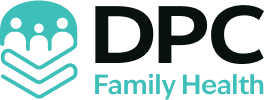Have you ever wondered if healthcare can be both high quality and affordable for families? Direct primary care offers a refreshing alternative to the traditional system by combining transparent membership fees with extended appointment times. This model cuts out hidden charges and focuses on patient-centered care, allowing families to budget their medical expenses more predictably. With a commitment to personalized healthcare and expanded access, DPC reshapes the way families experience care, making affordability and thorough doctor-patient communication a reality.
Lower Healthcare Costs: Comparing DPC to Traditional Insurance Models
Direct primary care offers families an opportunity to drastically reduce monthly healthcare expenses compared to traditional insurance. With insurance costs reaching around $1,400 each month, switching to a DPC membership at approximately $325 per month translates to significant annual savings—almost $11,100 in some cases. Negotiated service fees drive these cost reductions by lowering charges for procedures that often burden families with high expenses. For example, an MRI that typically costs close to $1,000 plus a deductible can drop to around $300 when managed through DPC. Similarly, full panel lab tests, such as hormone panels that might cost up to $1,500 under typical insurance plans, are offered at roughly $86 with DPC practices. This shift to a transparent pricing structure means that families enjoy cost-effective doctor visits without the additional financial stress of complex billing.
| Service Type | Cost Comparison |
|---|---|
| Insurance vs. DPC Membership Fee | $1,400 vs. ~$325 |
| MRI Costs | $1,000+ deductible vs. ~$300 |
| Full Panel Lab Test Pricing | $1,500 vs. ~$86 |
The DPC model not only simplifies budgeting by removing hidden charges and additional costs but also emphasizes predictable, flat-rate fees. This approach eliminates the administrative overhead frequently found in traditional insurance models and lays the groundwork for a cost structure that families can easily understand. By focusing on transparent pricing and negotiating discounted medical services, DPC practices create long-term financial benefits for patients. This model provides clarity around healthcare spending, making it a smarter choice for families seeking lower healthcare costs without compromising on quality care. The data clearly demonstrates that with direct primary care, families access both affordable and comprehensive medical services, ensuring that critical treatments remain within reach while avoiding the pitfalls of escalating insurance premiums.
Operational Efficiency & Simplified Billing in DPC Clinics for Family Affordability

Direct primary care providers bypass insurance requirements, eliminating extra administrative overhead and unclear billing practices. This model introduces financial transparency through flat-fee structures and consistent pricing. By removing insurance bureaucracy, families receive predictable bills that help simplify healthcare budgeting. DPC clinics also focus on building direct relationships between doctors and patients, ensuring that care remains cost-effective while reducing financial stress. This operational efficiency supports cost-effective care solutions that appeal to families who need clear, upfront pricing without hidden charges.
- no insurance bureaucracy
- negotiated service fees
- clear membership pricing
- efficient doctor appointments
DPC clinics actively negotiate with labs, imaging centers, and pharmacies to secure lower prices on services such as IV treatments and diagnostic tests. These negotiations drive down overall costs and contribute to a model that champions streamlined payments. By simplifying billing and reducing extra fees, DPC practices provide families with healthcare that is both affordable and reliable.
Financial transparency strengthens the provider-patient relationship by promoting clear communication around costs. Simplified billing removes payment complexities and makes doctor visits more efficient. This model not only streamlines administrative operations but also fosters an environment where families pay only for necessary care. With an emphasis on long-term cost savings, the direct primary care approach ensures that every patient receives prompt, hassle-free medical attention that meets their unique needs while keeping financial concerns at bay.
Final Words
In the action, the article detailed how a membership-based DPC model reduces family expenses while improving patient care.
It examined cost comparisons, extended consultations and streamlined billing practices that lessen financial pressures.
The discussion highlighted benefits such as transparent pricing, proactive prevention and accessible consultations.
By understanding How DPC Makes Healthcare More Affordable for Families, families gain a reliable healthcare option that replaces hidden charges with clear, predictable fees.
This approach offers a practical path to a healthier lifestyle and greater peace of mind.
FAQ
Q: What are the main benefits of Direct Primary Care (DPC)?
A: Direct Primary Care offers extended appointment times, comprehensive primary care services, and transparent monthly pricing. Members receive personalized healthcare without copays or deductibles, typically starting at $85 per month.
Q: How does DPC reduce healthcare costs compared to traditional insurance?
A: DPC can reduce monthly healthcare expenses from $1,400 to approximately $325. Members save on services like MRIs ($300 vs $1,000) and lab tests ($86 vs $1,500) through negotiated rates.
Q: What preventive care services are included in DPC memberships?
A: DPC memberships include early intervention for conditions like pre-diabetes and hypertension, weight management programs, hormone optimization, and regular preventive exams.
Q: How does DPC make healthcare more accessible?
A: DPC removes insurance barriers by providing direct access to physicians, same-day appointments, and clear pricing structures. This model eliminates administrative complexities and unexpected costs.
Q: What is included in a typical DPC membership fee?
A: DPC membership fees cover primary care visits, urgent care services, preventive screenings, and basic procedures. Many practices include virtual consultations and direct communication with physicians.
Q: How do DPC clinics maintain lower costs?
A: DPC clinics reduce expenses by eliminating insurance processing, negotiating directly with labs and imaging centers, and maintaining smaller patient panels for efficient operation.

